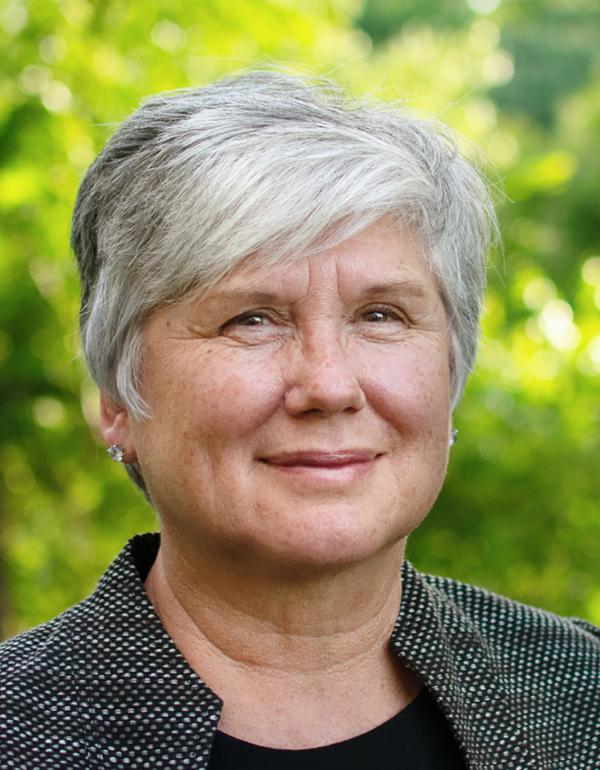

Education
- B.A., Chemistry, 1985, University of California, Santa Cruz
- Ph.D., Physical Chemistry, 1991, University of Colorado, Boulder (with W. Carl Lineberger)
- Postdoctoral, 1992, Columbia University (AAUW Postdoctoral Fellow with George W. Flynn)
Appointments
- ADVANCE Professor, CMNS, University of Maryland, 2015-2019
- Professor, University of Maryland College Park, 2010-present
- Associate Professor, University of Maryland College Park, 2005-2010
- Associate Professor, Department of Chemistry, Boston University, 2000-2005
- Clare Boothe Luce Assistant Professor, Chemistry Department, Boston University, 1994-200
Current Professional Positions
- Senior Editor, ACS Journal of Physical Chemistry, 2015-present
- Treasurer, APS Mid-Atlantic Section, 2014-2019
- Prize Selection Committees, APS 2015-2020
- Vice Chair, APS Division of Chemical Physics, 2019-2020
Research Interests
Chemical dynamics of highly excited molecules; collisional energy transfer and chemical reactions of activated molecules; high-resolution transient optical probing; trajectory calculations of molecular collisions; dynamics of molecules in extreme rotational states created in an optical centrifuge, behavior of molecules in strong optical traps.
Professional Societies
American Chemical Society (ACS); American Association for the Advancement of Science (AAAS), Fellow; American Physical Society (APS); Sigma Xi (ΣΞ); Fellow American Association for the Advancement of Science; Optical Society of America; National Organization for the Professional Development of Black Chemists and Chemical Engineers (NOBCChE), Alpha Chi Sigma (AXE), professional chemistry fraternity..
Major Recognitions and Honors
- Fellow of the Optical Society of America (2018)
- Creative Educator Award, College of Computer, Mathematical and Natural Science (2011)
- Fellow of the American Physical Society (2009)
- General Research Board Semester Award (2008) from the University of Maryland
- Elected Fellow of the American Association for the Advancement of Science (2006)
- Camille Dreyfus Teacher Scholar Award (1999)
- American Young Leader of the American Swiss Foundation (1998)
- National Science Foundation CAREER Award (1996)
- Office of Naval Research Young Investigator Award (1996)
- Clare Boothe Luce Professorship (1994)
- American Association of University Women Postdoctoral Fellow (1993)
- Elected to Sigma Xi (1991)
Recent Professional Service and Activities
Arnold and Mabel Beckman Foundation: Beckman Scholar Program Executive Committee (2007-2011). American Association of University Women: Fellowship and Grant Selection Panel (2008-2011). Board Member, Telluride Science Research Center (2012-2015). American Chemical Society: Scientific Committee for 2012 International Chemistry Olympiad (2010-2012); National Award Selection Committee Chair (2015-2017). American Physical Society: Program Committee, Division of Atomic, Molecular and Optical Physics (2003-2006); Councilor, Division of Chemical Physics (2013-2016); Board of Directors (2014-2016); National Science Foundation Review Panels (2012, 2013, 2016, 2018). Department of Energy Site Review (2017). Co-organizer, American Physical Society Mid-Atlantic Section Meeting (2018).
Students Mentored
18 PhD students, 35 undergraduate students (18 of whom entered graduate STEM programs), 7 postdoctoral fellows, 4 high school research interns and 4 visiting professors; 6 students have received Ph.D. degrees and 7 students received M.S. degrees.
Research in the Mullin group asks fundamental questions about the role of energy in chemistry. We use time-resolved laser spectroscopy to investigate how energy is used in chemical processes and collisions at the molecular level. Our research combines pulsed laser spectroscopy and extremely high-resolution optical probes to prepare molecules in excited states and interrogate how that energy is dissipated through reactive and inelastic collisions. Areas of interest include:
Transient spectroscopy of collisions
Chemical reactions are intimately linked to molecular collisions. Collisions can impart energy to help reactants overcome energy barriers. Collisions can also deactivate a reactive molecule by removing the energy required for reactions. These processes are particularly important for molecules in high temperature environments (up to 4000 K) such as those of combustion, plasmas and the atmosphere. Our group uses time-resolved high-resolution optical absorption to study the relationship between molecular structure and collision dynamics in molecules that have been prepared in very high energy states using pulsed laser excitation. These studies measure complete energy profiles for the vibrational, rotational and translational degrees of freedom that result from collisions and yield important information about mechanisms and rates of energy loss pathways through collisions. We complement our experimental studies using classical trajectory calculations to simulate collisional energy transfer and identify the means by which intermolecular potential energy surfaces impact collisional energy flow.
Driving chemical reactions with vibrational energy
High-resolution optical probing is a powerful tool for investigating molecular processes on a microscopic level. We are using this approach to investigate at a quantum-state resolved level how chemical reactions are affected by large amounts of energy in the vibrational degrees of the reacting molecules. These studies provide detailed information about the types of molecular motion enhance (and turn off) chemical reactivity. One goal of this project is to design reactions that can be turned on and off by external control.
Spinning molecules into reactive states
New developments in ultrafast laser technology offer exciting opportunities to investigate molecules in the presence of strong fields that are applied for a short period of time. We have developed a high power optical centrifuge to generate molecules in states that contain large amounts of rotational angular momentum in order to investigate the chemistry and dynamics of rotationally activated molecules. The optical centrifuge is formed by combining ultrafast pulses having opposite spectral chirp. Processes of interest include rotationally-induced dissociation and isomerization and the coupling of vibrational and rotational degrees of freedom in high energy states. We are currently developing methods for real-time monitoring of the centrifuged molecules.


